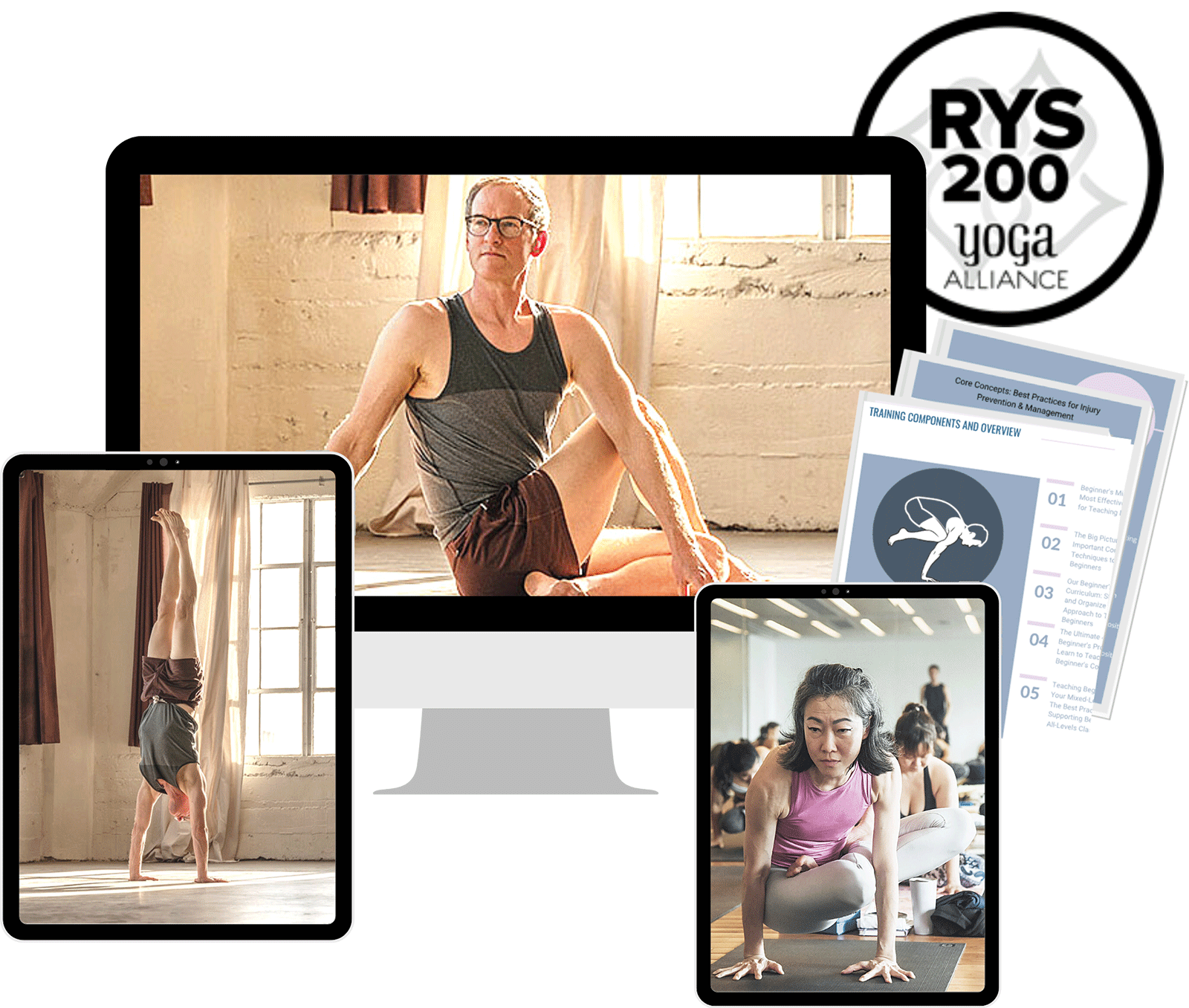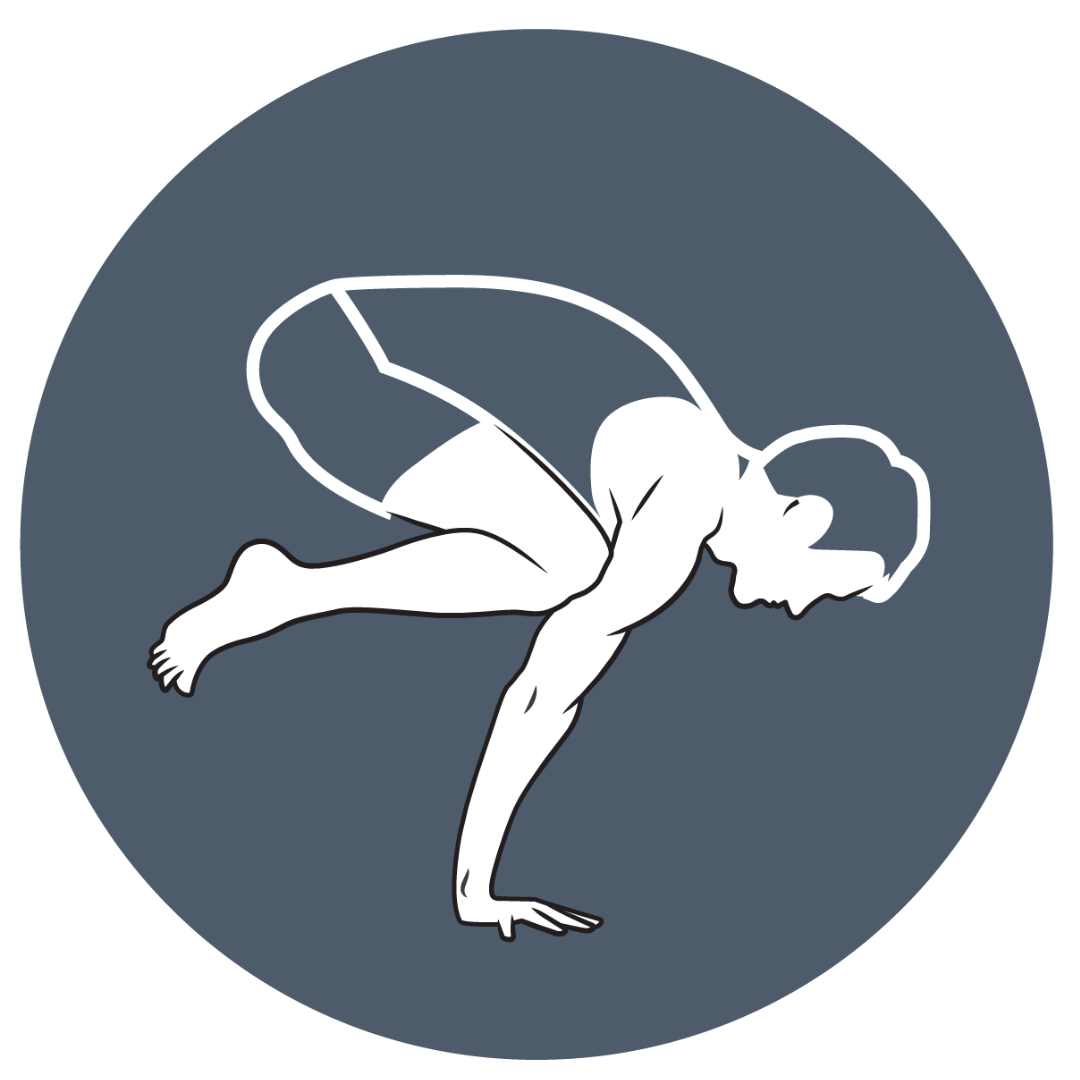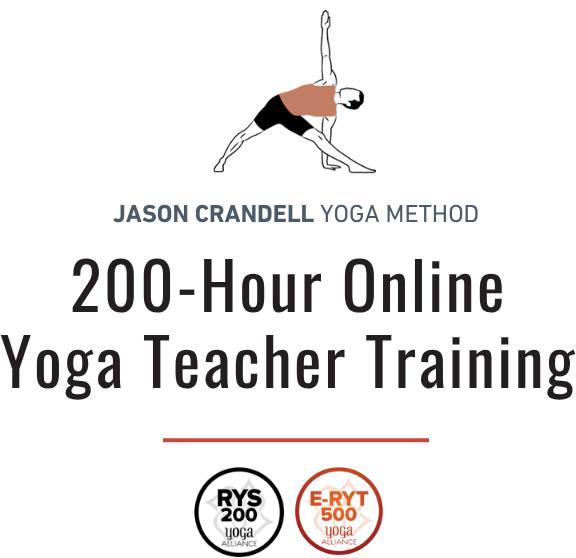FREQUENTLY ASKED QUESTIONS
200-Hour Yoga Teacher Training
FAQ
1. Why do a 200-Hour Yoga Teacher Training?
A teacher training shows you how philosophy, anatomy, meditation, and asana all connect—offering depth and continuity that drop-in classes can’t.
A 200-hour yoga teacher training is the first time most students see how all the different aspects of yoga truly fit together. In drop-in classes, you might get glimpses of philosophy, anatomy, meditation, or sequencing—but never the full picture. A training allows you to step back and understand how yoga’s philosophy, history, postural techniques, anatomy, and meditation practices are woven into one complete system.
Unlike regular classes that can feel patchwork, a training creates continuity and progression. You build knowledge day after day, compounding your learning so your brain and body aren’t constantly filling in gaps. This immersion makes it easier to retain what you learn and to apply it in your practice and daily life.
For many students, a teacher training is about more than becoming a teacher—it’s about deepening personal practice, finding clarity, and experiencing the grounding and calm that yoga can provide. Even if you never lead a class, the process helps you develop a more profound appreciation for yoga and a clearer understanding of yourself.
In short, the value of a 200-hour training isn’t just one thing—it’s the cumulative effect of going deeper into yoga while uncovering more about who you are.
2. Is this yoga teacher training right for you?
This training is a great fit if you value functionality, clarity, evidence-based teaching, and personal growth.
Every yoga teacher training has a different style and focus, which means the right training is the one that resonates with you. A 200-hour yoga teacher training is an excellent fit for students who value functionality, organization, and clarity. If you’re curious about how yoga truly works—the body, the mind, and the breath—you’ll thrive in an environment that emphasizes critical thinking, nuance, and evidence-based teaching.
Students who are drawn to blending traditional perspectives with modern insights often find this training especially rewarding. Beyond postures, you’ll also deepen your meditation, breathing practices, and understanding of yoga philosophy and history. This holistic approach helps you see yoga as an integrated system rather than just a physical practice.
It’s also a great fit for students open to growth and challenge. Learning anatomy, sequencing, and injury management can be demanding, but the process is supported and structured so you can succeed without unnecessary pressure. If you’re thoughtful, reflective, eager to learn, and motivated to support others, a 200-hour training provides the ideal environment to grow as both a student and future teacher.
3. Do You Have to Be Advanced in Yoga to Do a 200-Hour Teacher Training?
No. What matters most is sincerity and willingness to learn, not advanced postures. Skillful teaching comes from reflection and practice, not performance.
One of the most common concerns students have before enrolling in a yoga teacher training is whether they’re “good enough” or advanced enough in their practice. The truth is, you don’t need to be able to do advanced postures to participate in a 200-hour training—or to become an excellent teacher. A training isn’t about performance, it’s about learning how to understand, perceive, and support others.
Your sincerity, willingness to learn, and openness to growth matter far more than your current skill level. Yoga teacher training is about developing critical thinking, deepening self-reflection, and cultivating the skills to help others. Some students come in with strong physical practices, others still struggle with foundational poses—and both thrive when they are curious and committed.
Skill in yoga is difficult to measure by postures alone. What ultimately shapes great teachers is maturity, thoughtfulness, and the ability to stay reflective and receptive as a student. If you’re willing to engage with yoga’s many layers—physical, mental, and spiritual—you’re already ready to begin.
4. How Long Does It Take to Complete a 200-Hour Online Yoga Teacher Training?
The training adapts to your life. You can finish in just a few months, take up to a year, or find a pace in between.
One of the most common questions about online yoga teacher training is how long it takes to finish. The answer depends on your schedule, but most trainings—including this one—are designed to be flexible. In my program, about 75% of the course is prerecorded, which means you can begin learning right away as soon as you register. You’ll also participate in 14 weeks of live calls to help keep you accountable and connected to your peers.
There are three main ways to approach the training. First, if you want a faster pace, you can begin watching the video lessons as soon as you join and continue through them while attending the 14 weeks of live calls. Many students complete the program this way in just a few months. Second, if you prefer a more spacious experience, you can stretch your learning across a full year. Finally, you can choose a middle ground—taking six to eight months to complete at your own rhythm.
In short, an online 200-hour training adapts to your life. Whether you need a quick, structured path or a slower, flexible timeline, the course is built to fit your schedule.
5. Is Your 200-Hour Online Yoga Teacher Training Yoga Alliance Certified?
Yes. This program is fully accredited with Yoga Alliance, and you’ll be certified regardless of whether you join Yoga Alliance after graduation.
Yes—this training is fully accredited with Yoga Alliance. But it’s important to understand what that really means. First, Yoga Alliance is not a certifying body; they don’t grant you your certification. Instead, they register training programs like mine. When you graduate from this course, you receive your 200-hour certification directly from me as the program director. Joining Yoga Alliance afterward is optional and does not affect your certification status.
Another common misconception is that there are multiple “Yoga Alliances.” In reality, there is one original Yoga Alliance—the global standard recognized throughout the world. However, there are also other organizations that use similar names, such as Yoga Alliance UK or Yoga Alliance Canada. This training is registered with the original Yoga Alliance, which holds the highest international reputation.
So while you’ll be certified regardless of whether you choose to join Yoga Alliance, this program is fully accredited by the primary Yoga Alliance organization, giving you global recognition and the option to become a Registered Yoga Teacher (RYT) if you choose.
6. Should You Do Yoga Teacher Training Online or In Person?
In-person trainings offer community and immersion, but online trainings provide unmatched flexibility, organization, and lower costs—while still being highly interactive.
Deciding between an online and in-person yoga teacher training is one of the biggest choices prospective students face. Both have benefits, but the right option depends on your life, schedule, and goals. If you already have a strong connection with a local studio, trust the teachers, and the timing works for you, in-person may be the best path. It provides direct community engagement and live practice together.
However, online trainings offer significant advantages in flexibility and accessibility. In-person programs often require 15–30 weekends or nearly a month away—something many people simply can’t manage with jobs and family commitments. Online courses allow you to learn at your own pace, fitting training into your existing lifestyle. You can pause, rewind, and rewatch lessons, which is especially helpful for subjects like anatomy, philosophy, and teaching technique.
Online trainings also tend to be more organized and consistent, since the content is carefully structured and recorded. Finally, cost is often a deciding factor: in-person programs may require travel, accommodation, or time off work, all of which add up quickly. With online training, you only pay tuition and can continue your daily routine without additional expenses.
7. Will I Be Ready to Teach After a 200-Hour Yoga Teacher Training?
From week two, you’ll start practicing peer teaching in small groups. By graduation, you’ll have 13–14 weeks of practice, 5 ready-to-use sequences, and a beginner’s curriculum—so you’re ready to lead classes with confidence.
Yes—if you commit to the process, you’ll graduate fully prepared to teach your first class. In this training, teaching doesn’t wait until the end. Instead, you begin practicing in small groups as early as week two. At first, it’s simple—like guiding a half Sun Salutation—but the repetition builds skill, comfort, and confidence over time.
Each week, you’ll expand on what you’ve practiced, gradually layering in new teaching elements. By the midpoint of the training, you’ll be teaching regularly in peer groups with instructor feedback. This process ensures that by graduation, you’ll have 13–14 weeks of teaching practice behind you—not just a single test class.
You’ll also leave with practical tools: five set sequences you’ve practiced extensively, plus a complete beginner’s curriculum to help you feel confident leading classes right away. While no one is a “perfect teacher” on day one, this program equips you with the skills, repetition, and real-world practice you need to start strong. The supportive community and additional optional teaching sessions provide even more opportunities to refine your craft.
In short, when you complete this 200-hour training, you’ll be ready to step into the role of teacher with confidence and clarity.
8. Can You Do a Yoga Teacher Training Just for Your Personal Practice (Even If You Don’t Want to Teach)?
About half of students join to deepen their practice, not to teach. This training welcomes both paths—personal growth or professional development.
Yes. In fact, about half of the people who enroll in a 200-hour yoga teacher training do so simply because they love yoga and want to deepen their personal practice. Public classes only scratch the surface of yoga’s history, philosophy, and techniques. A training provides the structure, context, and immersion to explore these areas more fully.
Many students join because they want to expand their knowledge, refine their practice, and understand themselves more deeply—not because they plan to teach. And that’s completely valid. A 200-hour training allows you to dive into yoga’s traditions, develop new skills in meditation and breathwork, and connect with a supportive community of like-minded practitioners.
Interestingly, many students who initially join for personal enrichment end up discovering a passion for teaching along the way. But whether you choose to share yoga with others or keep it for yourself, a training can be one of the most rewarding investments in your personal growth.
9. How Much Interaction Do You Get in a 200-Hour Online Yoga Teacher Training?
You’ll interact directly with me in live sessions, Q&As, and small-group teaching, while also connecting with peers in supportive breakout groups.
One of the biggest questions about online yoga teacher training is whether it feels interactive—or if it’s just you watching videos alone. In this program, you’ll receive both direct interaction with me as your teacher and meaningful engagement with your peers. Unlike many trainings with multiple instructors, I lead 100% of the content myself. This gives you a cohesive, consistent learning experience without the confusion of too many voices at once.
Beyond the recorded lessons, we meet for live sessions that include three components: guided practice, open Q&A, and peer teaching. You’ll have the chance to practice live, ask unlimited questions, and receive feedback directly from me. I want the training to be a two-way street, shaped by what you need to learn, not just what I want to teach.
You’ll also connect closely with peers in small group teaching sessions. Practicing together creates a strong sense of community and support. And if you’re more introverted, that’s welcome too—there’s space to participate at your own comfort level. The training is designed to balance structure, support, and flexibility so every student feels included.
10. What Makes This 200-Hour Online Yoga Teacher Training Unique?
This training combines 30+ years of teaching experience with a cohesive, expert-led curriculum, early peer teaching, and a complete beginner’s program. You’ll graduate confident, supported, and ready to teach in the real world.
With so many 200-hour teacher trainings available, what sets this one apart? First is depth of experience: I’ve been teaching yoga for over 30 years, including 20 years of in-person trainings around the world and over a decade of online trainings. Teaching yoga classes and teaching people to teach yoga are very different skills, and this program is built on decades of experience doing both.
The curriculum is cohesive and integrated, not a patchwork of disconnected workshops. You’ll learn functional anatomy co-developed with a Doctor of Sports Medicine, and you’ll see how traditional yoga philosophy is woven into modern postural and technical teaching so it feels meaningful and applicable.
Community is another key element. Even online, I create a supportive environment where peers connect through small-group teaching and live interaction. My reputation speaks for itself: many students come to me through word-of-mouth referrals from teachers who have trained with me.
You’ll also gain practical, hands-on skills from day two of training, including consistent peer teaching and a complete beginner’s curriculum—so you graduate confident in teaching real students. And with over 30 years as an independent yoga teacher, I know how to prepare you for sustainable teaching in today’s world.
11. What Do You Learn in a 200-Hour Online Yoga Teacher Training?
You’ll study postural technique, meditation, breathwork, cueing, functional anatomy, sequencing, philosophy, and business skills—plus 5 set sequences and a beginner’s curriculum.
A 200-hour yoga teacher training provides a comprehensive, well-rounded education that goes far beyond what you can get in drop-in classes. In this program, you’ll begin with your own personal practice and a deep dive into postural technique, seated meditation, and breathwork. From there, you’ll learn how to translate that understanding into effective verbal cueing—helping you guide students clearly and safely.
Functional anatomy is a cornerstone of the training, presented in an accessible, practical way so you can immediately apply it to your teaching. You’ll also gain skills in class development and sequencing. By the end of the course, you’ll not only have five specific sequences you can teach with confidence, but also the tools to begin creating your own.
Another unique feature is the focus on teaching beginners, giving you a structured method for working with new students—the community most new teachers start with. You’ll also study yoga philosophy and history in a way that connects tradition with modern practice, bringing deeper context to your teaching. Finally, the course includes guidance on the yoga business and entrepreneurship, covering topics like social media, auditions, and building a sustainable career.
Join us!

Total Tuition: $2900 USD
PS: If you have previously completed a 200-hour teacher training, you are eligible for a 20% discount. Please email support@jasonyoga.com for details.
Need help? You can book a free 15-minute call with me to get your questions answered. Here's the booking link.
You can also email us with questions at support@jasonyoga.com
Live calls begin January 13, 2026
If you are pursuing certification, you will choose one of the call time options below. Calls are 90 minutes long.
TUESDAYS @ 8:00 am PST / 11:00am EST / 4:00pm GMT
THURSDAYS @ 4pm PST / 7pm EST / 11am AEDT (Friday)
Lock in the early bird pricing and start working your way through the course!
Tution: $2900

Jason Crandell Yoga Method
7040 Avenida Encinas Ste 104-122
Carlsbad, CA 92011
© Jason Crandell Yoga by Jason Crandell Yoga Method. All Rights Reserved.
